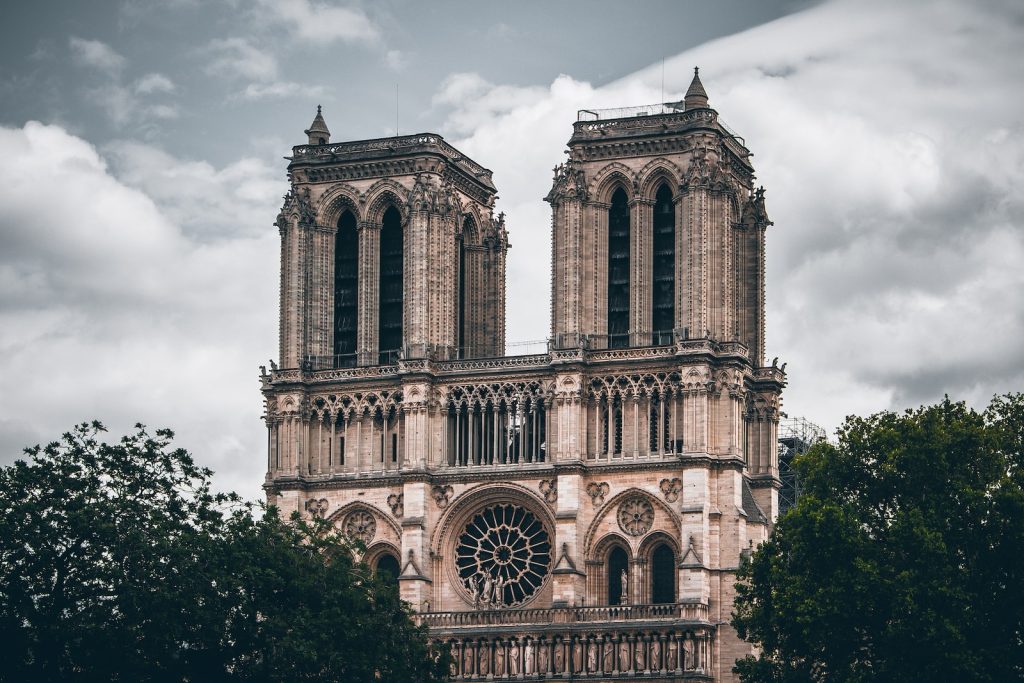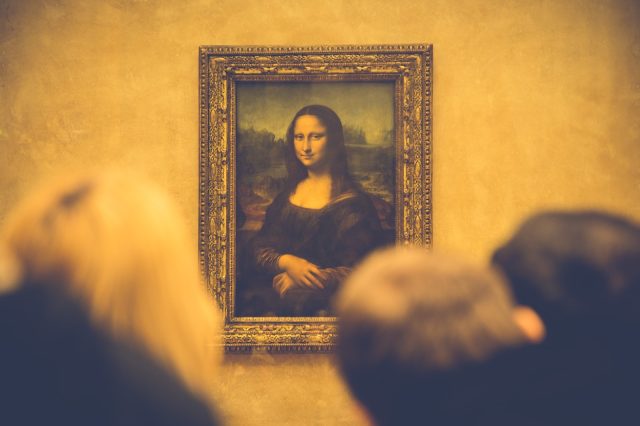France is a rich and diverse country with a culture that is defined by its iconic art and architecture. From the ornate castles of the Loire Valley to the classic cafes of Paris, France’s unique history has created an atmosphere of beauty and timelessness. This article will explore some of France’s most beloved landmarks and their significance in the country’s identity.
France’s Iconic Art
France is renowned for its iconic art, which has left an indelible mark on the world of art and culture. From the Impressionists to the Surrealists, French artists have produced some of history’s most innovative and influential works of art. The Louvre Museum in Paris, one of the most famous museums in the world, houses many of these iconic artworks, including the Mona Lisa by Leonardo da Vinci and the Winged Victory of Samothrace. The art scene in France is also vibrant and diverse, with many contemporary artists pushing the boundaries of traditional art forms. Whether you’re interested in classical art or more modern and experimental styles, France’s iconic art scene has something to offer everyone.
Medieval Architecture: Cathedrals, Castles

France is home to some of the most iconic examples of medieval architecture, including cathedrals and castles that are celebrated for their grandeur and beauty.
The Cathedral of Notre-Dame de Paris is one of the most famous examples of French medieval architecture. This stunning Gothic cathedral, with its intricate stone carvings and soaring stained-glass windows, is one of the most recognizable landmarks in France. Other famous cathedrals in France include Chartres Cathedral, with its magnificent stained glass and sculpture, and Reims Cathedral, where many French kings were crowned.
Castles are also a significant aspect of medieval French architecture, symbolizing power and strength. The Château de Chambord, a massive castle built in the Loire Valley in the 16th century, is considered a masterpiece of French Renaissance architecture. The Château de Chenonceau, another Loire Valley castle, features an iconic arched bridge over the river Cher and is renowned for its stunning gardens. The fortified city of Carcassonne, with its walls and turrets, is also a well-known example of medieval French architecture.
The medieval architecture of France is celebrated for its intricate design, grandeur, and sense of history. These cathedrals and castles continue to inspire and captivate visitors worldwide, inviting them to step back in time and marvel at the beauty of the past.
Renaissance and Baroque Influences
The Renaissance and Baroque periods were influential eras in the history of art and architecture in Europe, and their impact can be seen throughout France.
The Renaissance began in Italy in the 14th century and was characterized by a renewed interest in classical art and culture and an emphasis on perspective and realism. The Renaissance brought about a resurgence of interest in classical motifs and ornamentation and a shift toward more symmetrical and harmonious design in France.
France’s most famous example of Renaissance architecture is the Château de Chambord, with its intricate façade and ornate details. Another notable example is the Palace of Fontainebleau, which was heavily influenced by Italian Renaissance design and featured a mix of classical and French styles.
The Baroque period, which followed the Renaissance in the 17th century, was characterized by its dramatic and ornate style and a greater emphasis on emotion and movement. In France, the Baroque style is often associated with the reign of King Louis XIV, who commissioned many grand buildings and gardens that epitomize the Baroque aesthetic.
The Palace of Versailles, built during the reign of Louis XIV, is a prime example of French Baroque architecture, with its opulent interiors, grand courtyards, and meticulously landscaped gardens. Other examples of French Baroque architecture include the Chapel of the Palace of Versailles and the Église Saint-Sulpice in Paris.
The Renaissance and Baroque influences in French architecture are a testament to the enduring legacy of these important artistic movements. Their impact on French architecture continues to be felt today, inspiring new generations of architects and designers to create beautiful and innovative works that celebrate the rich history of French art and culture.
Classical and Romantic Art Movements
Classical and Romantic art movements are two of the most significant periods in art history, both of which profoundly impacted the development of art in France.
Classicism, which emerged in the 17th and 18th centuries, focuses on balance, harmony, and clarity. In France, the Classical period was marked by a return to the ideals of ancient Greece and Rome, emphasizing simplicity, proportion, and order. Classicism can be seen in many French landmarks, such as the Panthéon in Paris, designed to resemble the Roman Pantheon, and the Arc de Triomphe, decorated with classical motifs and ornamentation.
On the other hand, Romanticism emerged in the 19th century as a reaction against the formalism and rationalism of Classicism. Romantic art is characterized by a focus on emotion, individualism, and the natural world. In France, Romanticism was characterized by the works of artists such as Eugène Delacroix, who used bold colors and dramatic scenes to express powerful emotions.
Some of the most famous examples of French Romantic art can be found in the works of the Impressionists, who rejected the traditional academic style in favor of a more spontaneous and emotive approach to painting. The works of artists such as Claude Monet, Pierre-Auguste Renoir, and Edgar Degas are celebrated for their vivid colors, soft brushstrokes, and unique compositions.
The Classical and Romantic art movements represent two distinct and influential periods in French art history, each leaving an indelible mark on the country’s artistic landscape. From the grandeur of the Classical period to the emotional intensity of Romanticism, these movements continue to inspire and captivate art lovers from around the world.
Impressionism and Post-Impressionism
Two of the most famous art movements that emerged in France during the 19th century, and they profoundly impacted the development of modern art.
Impressionism, which emerged in the 1870s, is characterized by its focus on capturing the fleeting effects of light and color and the impression it leaves on the human eye. Impressionist artists sought to capture the beauty of everyday life, using loose brushstrokes and vivid colors to create a sense of movement and spontaneity. Some of the most famous Impressionist artists include Claude Monet, Pierre-Auguste Renoir, and Edgar Degas.
Post-Impressionism, which emerged in the late 19th century, responded to Impressionism and its focus on sensory perception. Post-Impressionist artists sought to move beyond the immediate visual impression and express a deeper emotional or spiritual meaning in their work. This movement included artists such as Vincent van Gogh, Paul Cézanne, and Georges Seurat, who each developed their own unique style and approach to painting.
Post-Impressionist artists experimented with new techniques and methods of painting, including pointillism, which used small dots of color to create a sense of light and color, and bold, expressive brushwork to convey emotion and meaning.
The Impressionist and Post-Impressionist movements revolutionized the art world and inspired new generations of artists to explore new forms of expression. Today, their influence can be seen in the works of contemporary artists worldwide, and their legacy continues to shape how we think about and appreciate art.
20th Century Modernism
20th-century modernism in France was marked by a diverse range of art movements and styles that emerged in response to the rapidly changing world of the 20th century. These movements were characterized by their rejection of traditional art forms and their focus on experimentation and innovation.
One of France’s most important modernist movements as Cubism, which emerged in the early 20th century and was pioneered by artists such as Pablo Picasso and Georges Braque. Cubist art is characterized by its geometric shapes and fragmented forms, which seek to represent objects simultaneously from multiple perspectives.
Another important modernist movement was Surrealism, which emerged in the 1920s and was inspired by the work of psychoanalyst Sigmund Freud. Surrealist art sought to explore the subconscious mind and the world of dreams, creating strange and surreal images that challenged conventional ideas about reality.
Other important modernist movements in France included Fauvism, which emphasized bright colors and bold brushstrokes, and Expressionism, which sought to convey the emotional experience of the artist through bold, gestural brushwork.
In the mid-20th century, artists in France began to embrace new forms of abstraction, including Abstract Expressionism and Minimalism, which emphasized simplicity, purity, and the inherent properties of the materials used in the artwork.
Today, the legacy of 20th-century modernism can be seen in the work of contemporary artists worldwide, who continue to explore new forms of expression and experiment with new techniques and materials. The spirit of innovation and experimentation that defined the modernist movements in France continues to inspire new generations of artists, and the legacy of modernism remains an important part of the country’s artistic and cultural heritage.
Conclusion: France’s Aesthetic Legacy
France has an unrivaled aesthetic legacy in the world of art and architecture. From the towering Gothic cathedrals of the Middle Ages to the revolutionary Impressionist and Post-Impressionist movements of the 19th century and the bold experimentation of 20th-century modernism, France has played a central role in developing art and architecture for centuries. Its cultural legacy continues to influence artists and architects worldwide, and its artistic achievements have profoundly impacted how we think about beauty and aesthetics. France has given the world a wealth of inspiration and creativity through its iconic art, architecture, and cultural heritage. Its influence continues to be felt in the arts and beyond.






























